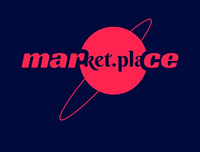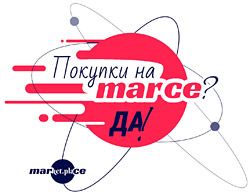
Electronic english version since 2022 |
The newspaper was founded in November 1957
| |
|
Number 4 (4752) |
In JINR Departments
Advanced procurement system
for the world scientific centre
In organizations, especially large and multidisciplinary ones, such as JINR, procurement activities are of great concern and significantly affect the overall result.
 Many stages of this activity, based on paperwork, have been outdated, applications have been lost, approvals have been delayed, there was no common accounting database for all structural divisions. In order to unify, simplify and make the process more flexible, as well as to accumulate data in a single system, Development of Digital Services Department (DDSD) started modernizing this area. One of the achievements is the opening of the Institute's Marketplace.
Many stages of this activity, based on paperwork, have been outdated, applications have been lost, approvals have been delayed, there was no common accounting database for all structural divisions. In order to unify, simplify and make the process more flexible, as well as to accumulate data in a single system, Development of Digital Services Department (DDSD) started modernizing this area. One of the achievements is the opening of the Institute's Marketplace.
 The first attempt was made in 2018, in cooperation with Komus LLC. The next time they returned to this idea was when writing new regulatory documents on procurement activities in 2021-2022. And finally, when a technological platform suitable for the Institute's needs was selected, in 2023, the service was customized and the corresponding regulatory document - "Regulations for the use of the Marketplace" was prepared. And from 2023 to 2024, DDSD was engaged in the implementation of the technological solution. In March last year, it was ready, work began in test mode. The first user-tester was the Laboratory of Nuclear Problems. We asked DDSD Head Mikhail VASILIEV to tell us details about the capabilities and operating principle of the new platform.
The first attempt was made in 2018, in cooperation with Komus LLC. The next time they returned to this idea was when writing new regulatory documents on procurement activities in 2021-2022. And finally, when a technological platform suitable for the Institute's needs was selected, in 2023, the service was customized and the corresponding regulatory document - "Regulations for the use of the Marketplace" was prepared. And from 2023 to 2024, DDSD was engaged in the implementation of the technological solution. In March last year, it was ready, work began in test mode. The first user-tester was the Laboratory of Nuclear Problems. We asked DDSD Head Mikhail VASILIEV to tell us details about the capabilities and operating principle of the new platform.
Tell us, please, what tasks does the JINR Marketplace meet?
- In our Institute, in accordance with the Regulation on procurement activities, purchases are classified by cost: from 0 to 5000 US dollars, from 5000 to 30000 and so on. The Marketplace is aimed at automating the acquisition of the simplest range of goods worth up to 5000 dollars that does not require signing a contract and can be carried out by invoice.
Let's compare how procurement was implemented before and how it is implemented today?
- Previously, employees would come to a certain company or store to buy office supplies, tools, household goods, inexpensive and easy-to-use equipment, issue an invoice and approve it in their department. After paying the invoice, the goods could be picked up in the store. That is, the sequence was followed: first, the procedure for approving the invoice on paper, approval in information systems, then making the payment. And only after that could you obtain the order.
At the same time, difficulties could arise at each stage: prepayment, that is, making an advance payment; a lengthy, not always formalized procedure for approving the invoice and finally, delivery of this equipment, return or repair, if this equipment implied warranty service.
How is all this implemented today? What advantages does the Marketplace provide?
- The Marketplace is an electronic system that brings together a group of suppliers with whom we sign framework agreements in advance. The agreements specify the product categories of the purchased goods, the pricing policy (usually, we always have a discount compared to what employees can get under general conditions), the payment and delivery procedure and warranty service. Payments are made on a post-payment basis, that is, first the goods are delivered and afterwards, an invoice is issued for payment. Almost all suppliers in the Marketplace have a deferred payment period and it is quite long, up to several weeks. We organize logistics within the Institute, from the Central Base to the customer in the laboratory, on our own. In some cases, for example, when ordering furniture, suppliers deliver the goods directly to the customer, since the terms of the purchase include assembly and placement.
Thus, the Institute ensures transparency of purchases, automatic accumulation of data in a single database, adequate pricing, uniform centralized logistics and accordingly, the purchased goods receipt. In addition, a clear system of activities is developed in the event of delivery of low-quality products. As for the users themselves, they no longer need to go to stores or worry about the risk of cooperating with unscrupulous suppliers on the Internet.
How can one get into the Marketplace?
- To enter the Marketplace, one should be registered in the Single Sign-On (SSO) system developed by the Laboratory of Information Technologies. But in order to perform procurement actions, one has to contact the Procurement and Logistics Service (PLS) to be provided with access.
What about assortment and price competition? It is important for any user and buyer to have a choice in price and quality.
- The following categories are currently presented in the Marketplace: office supplies, household goods, construction and finishing materials, office furniture and basic equipment - tools such as drills and so on. Since the goods are provided by several suppliers, we actually have competition in each category of goods. For example, in the category "Office supplies", the product "Office paper" is currently presented by 16000 items, "Fasteners" - 7000.
The interface looks unusual for marketplaces…
- Yes, it is not colorful, for we have no task of distributing any advertising. You can search for a product by article, by availability (this is a corporate Marketplace, employees can order one denomination in tens and hundreds of copies), by price range and suppliers. Today, we have seven suppliers, soon there will be nine - Leman Pro (the old name of Leroy Merlin) and Petrovich will be added, fairly large suppliers with goods for repair work. These can be handles for windows, for doors or just the doors, plumbing. If you need to buy something urgently, of course, as before, you will have to go to the store. But if you have time, it is better to order in the Marketplace - there is clear pricing and a wide selection. In addition, there will be no problems with payment, return and the prices are much lower than in city stores. In total, more than one hundred thousand items are currently available.
Please, tell us in more detail about the purchase?
- In each department (we are talking about Laboratories and the Management), employees that can make purchases are determined. They log in to the Marketplace via SSO and act according to the usual scheme: they put what they need in the basket, press the appropriate buttons. After that, the application is sent to the Institute's information systems. In the 1C system, the employee responsible for the procurement activities of the entire department accepts the application, checks the compliance of the selected goods with the JINR nomenclature reference books. Afterwards, the application is transferred to economists, where the availability of funds and the validity of the selected source of financing for the purchase are checked and the route for further approval is determined. As a rule, such routes should include: the immediate supervisor that confirms the need to purchase this product, the person responsible for the source of financing and finally, Director of the Laboratory or Head of the Department. After these persons have approved the order, the application from our information system returns to the Marketplace, the supplier receives a signal from us - a legally significant confirmation. And in accordance with the agreements between JINR and these suppliers, delivery is carried out, as a rule, to the Central Base of PLS. After that, we check the goods, register them in our information system. In this system, the supplier sees that we have obtained the goods and this is the basis for issuing an invoice. Afterwards, the order goes to a specific laboratory.
How long does it take from pressing the order button until delivery?
- We have a maximum of three working days for approval. But everything depends on the employees involved in approval - if they are on site, the order goes through all stages within one day. Delivery is carried out depending on the product category and the counterparty's conditions. As a rule, we are talking about "Komus" or "Vse Instrumenty" and we have been cooperating with them for many years and it also takes three working days. We have fairly large suppliers with huge turnovers and well-established logistics, they know how to work with us, the logistics routes are well-established.
Who can become a responsible for procurement?
- There are three types of structural divisions at the Institute: Laboratories, the Management and self-supporting units. The situation with the Laboratories (this system has been developed mainly for them) is quite clear. The responsible is determined by the Laboratory Director, usually, these are employees involved in procurement activities. There are economists, heads of scientific themes. In the Management, in the departments, the role of Laboratory Director is performed by Head of the Department and we have one economist. We do not work with self-supporting units yet, this is the next stage of development.
What to do, for example, in our case? The editorial office does not belong to departments and we are not the only ones.
- In the structure of the Chief Scientific Secretary's service, an employee should be appointed that has access to this system. You contact him, send a request. He enters the system, selects what is needed, presses a button. After that, the list of goods is sent to the economist for approval. He carries out the necessary actions, determines the approval route within the system, as a rule, there will be either the immediate head of the service or an authorized employee. And all you have to do is waiting for a visa or delivery.
What can confuse employees when working with the Marketplace, is everything worked out and tested?
 - As in any big business, there may be inconsistencies. For example, when new suppliers post their goods, incorrect category names appear. It should not be confusing, because the category content is correct, they will just change the name later.
- As in any big business, there may be inconsistencies. For example, when new suppliers post their goods, incorrect category names appear. It should not be confusing, because the category content is correct, they will just change the name later.
You have stated that there is no need for advertising within the Institute. But such a system may be adopted by our scientific partners and it would be good to record a unique name...
- In 2024, we held a number of meetings with potential users of the Marketplace. At one of them, held in December, we presented the brand of our marketplace. The meeting participants approved it.
 Using a brand, that is, a short and memorable name instead of a long and official one, such as "JINR Marketplace", helps to promote the service and we hope, will form a positive attitude towards it.
Using a brand, that is, a short and memorable name instead of a long and official one, such as "JINR Marketplace", helps to promote the service and we hope, will form a positive attitude towards it.
The short name Marce was derived from the English name: Mar[ketpla]сe. During the discussions, we considered various variants, but this version received the greatest approval from the meeting participants.
Taking this opportunity, we invite the Institute's employees to use our service more actively. We hope that it will simplify the procurement process for employees and in general, increase the efficiency of procurement activities.
You can go to Marce using the QR code
If you have problems with access or registration, contact us at smts@jinr.ru.
Galina MYALKOVSKAYA